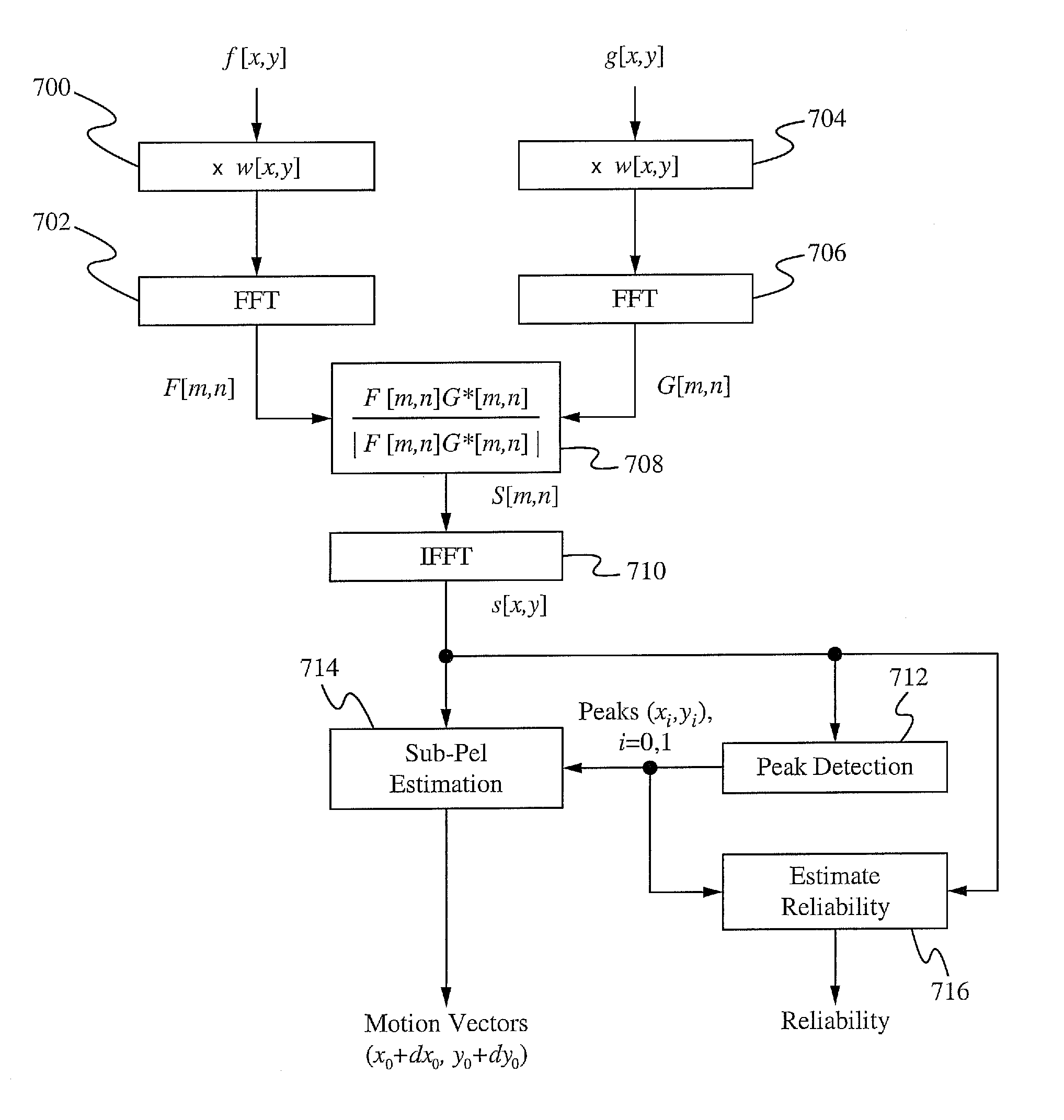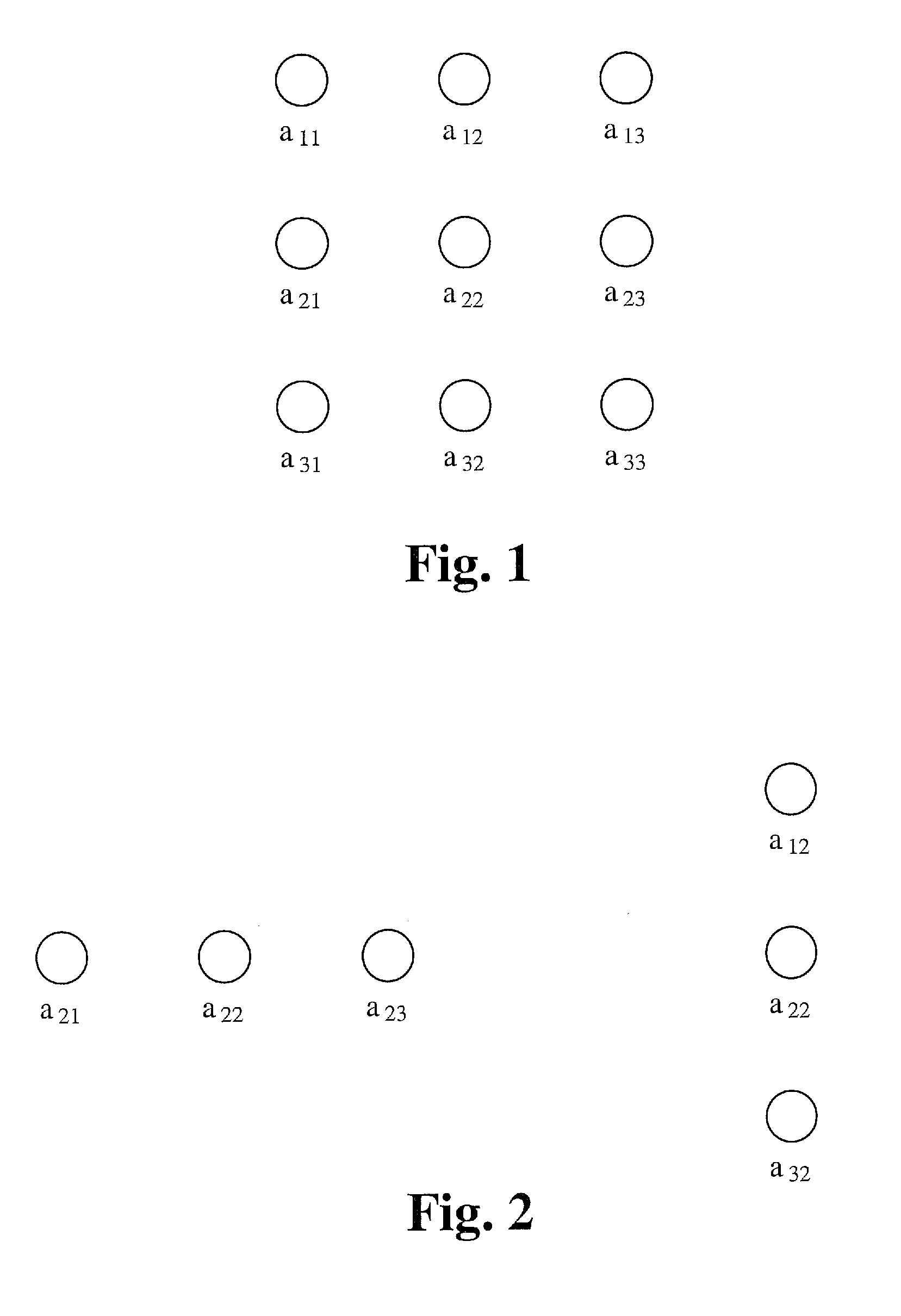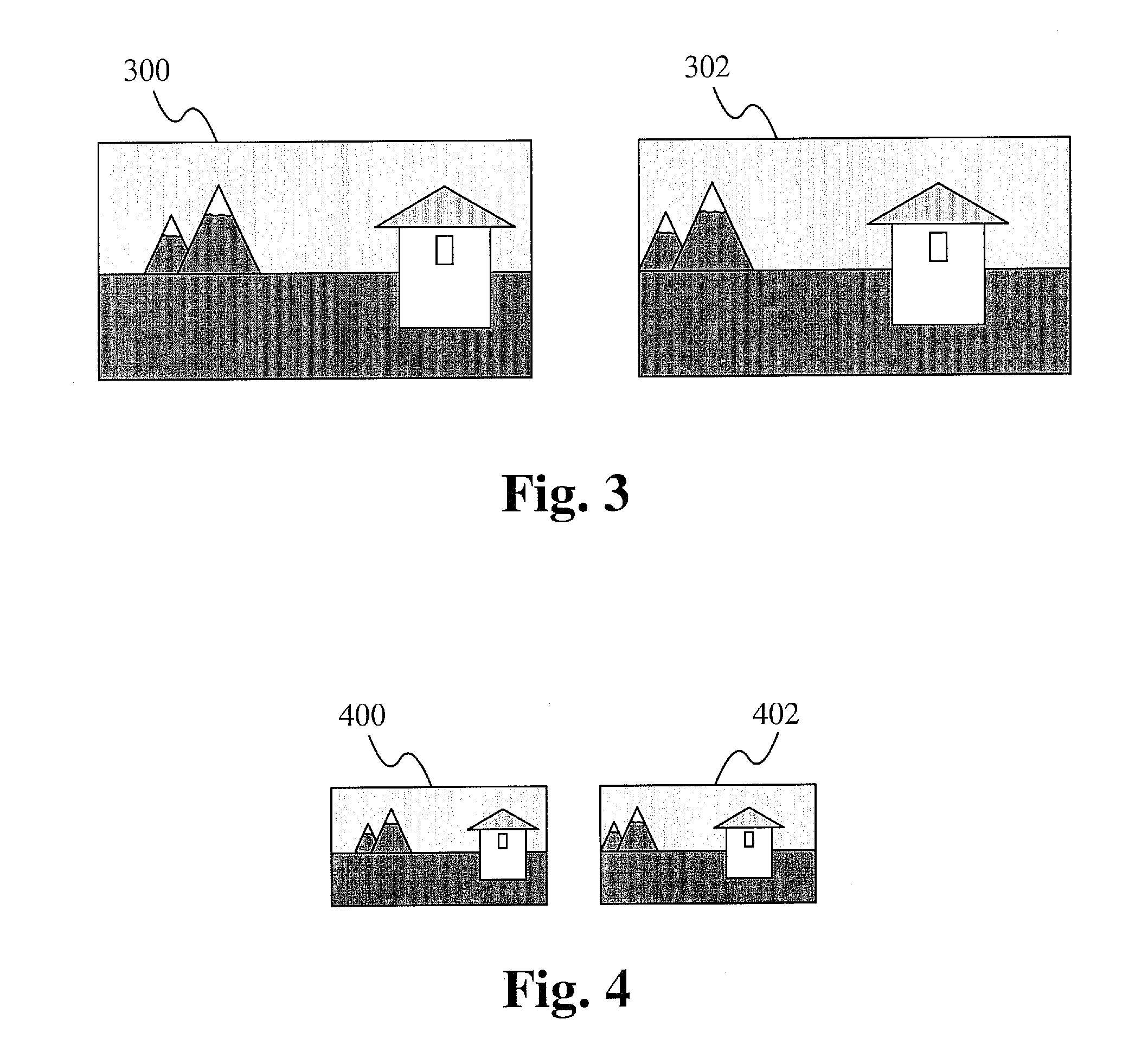Method to improve accuracy and reliability of motion estimated with phase correlation
a phase correlation and motion estimation technology, applied in the field of image and video processing, can solve the problems of complicated determination of such a fit, limited methods, and 1-d sub-pel methods that do not provide as complete of peak neighborhood fit, so as to improve accuracy and reliability of motion estimation, eliminate sub-pixel errors, and improve reliability estimation
- Summary
- Abstract
- Description
- Claims
- Application Information
AI Technical Summary
Benefits of technology
Problems solved by technology
Method used
Image
Examples
Embodiment Construction
[0035]Pixels are organized into blocks, which are the basic unit of analysis within an image. Motion estimation is a way of describing the difference between two images in terms of where each block of the former image has moved. Each block in a current image is associated with an area in a reference image, that is well-correlated, using a “motion vector.” The motion vectors may relate to the whole image, referred to as global motion estimation, or specific parts, such as rectangular blocks, arbitrary shaped patches or even per pixel. There are many applications of motion estimation, such as estimating motion between the images of FIG. 3.
[0036]FIG. 3 illustrates two images whose motion is able to be estimated. Image 302 is the same scene as image 300, but the camera has panned to the right in the image 302. If the images are aligned by estimating the motion between them, there are numerous possible applications. One such application is to stitch them together as part of a panoramic i...
PUM
 Login to View More
Login to View More Abstract
Description
Claims
Application Information
 Login to View More
Login to View More - R&D
- Intellectual Property
- Life Sciences
- Materials
- Tech Scout
- Unparalleled Data Quality
- Higher Quality Content
- 60% Fewer Hallucinations
Browse by: Latest US Patents, China's latest patents, Technical Efficacy Thesaurus, Application Domain, Technology Topic, Popular Technical Reports.
© 2025 PatSnap. All rights reserved.Legal|Privacy policy|Modern Slavery Act Transparency Statement|Sitemap|About US| Contact US: help@patsnap.com



